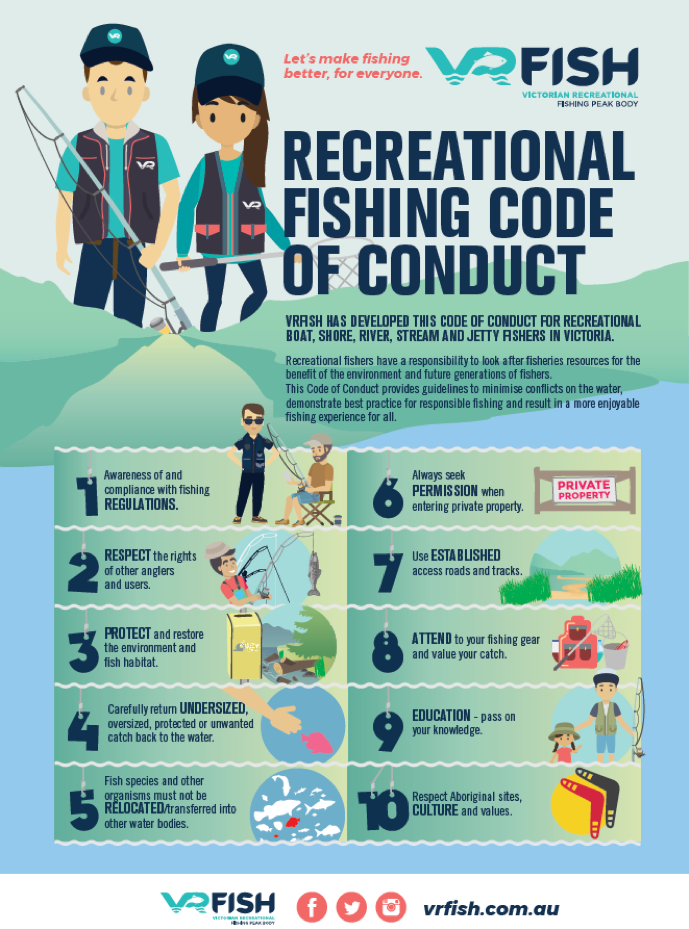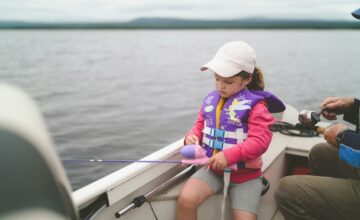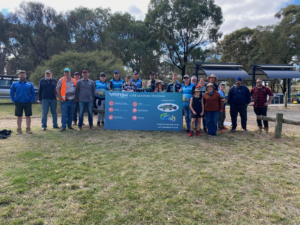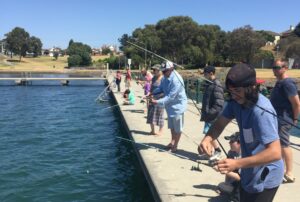July 4, 2022
The winter school holidays are almost here. School holidays are a great excuse to get the kids outdoors, enjoy some fresh air and take up a new hobby, like fishing!
Fishing is one of the best activities you can participate in with your family as it can be enjoyed by all ages, allows you to connect with nature, and is a great form of exercise. As an added bonus, if you do catch a feed, you will receive a delicious and nutritious protein-rich meal.
To help get you started, we’ve put together some of our top fishing tips for beginners.
BUY A LICENCE
A recreational fishing licence is required to go fishing in Victoria and allows you to go fishing in all waterways including marine, estuarine and inland waters. While your kids won’t need a licence if they’re under 18 years of age, you will need one unless you’re classed as exempt.
You can buy your recreational fishing licence online through Service Victoria or in person at selected tackle stores and authorised retailers across the state.
If you’re fishing on the Murray River or Lake Mulwala, you’ll need a New South Wales fishing licence.
SAFETY FIRST
It’s important to have a plan in place before heading out on the water to ensure you all return home safely. Always let someone know where you’re going and when you plan to return, just in case something does go wrong.
Now that the weather has cooled down, it’s always a good idea to check the weather forecast via the Bureau of Meteorology so you can be prepared for the elements before heading out on the water. This also allows you to check the water conditions, such as tidal and swell conditions, if fishing along the coast.
Lifejackets are always recommended, particularly when fishing from a boat and if you’re a younger fisho. New regulations came into effect earlier this year where lifejackets must be worn at 10 high risk rock fishing locations across the state.
When heading out fishing during winter, it’s always best to dress for the weather. Warm coats and boots are necessary in winter. Boots are great if you need to walk around in the water. It’s also worth packing a beanie, rain coat and wearing your thermals to keep warm in the winter cold.
It’s always a good idea to pack a first aid kit, some extra sunscreen, insect repellent and a torch just in case.
PLAN YOUR TRIP
Don’t make the mistake of going in unprepared as you may come home disappointed after a donut day. Take the time to research the area you want to go fishing in as well as the species you’d like to target. Where you plan to go fishing will impact the type of fish you can target. On the other hand, if you’re keen on reeling in a specific species, that will impact where you can go fishing.
Visit your local fishing club or fishing tackle store to get the latest on what’s biting and some handy tips. These days there are also plenty of Instagram accounts and Facebook groups devoted to sharing catches and fishing information in different areas across the state.
If you’re planning to take your boat out, check out the Boating Vic website or download the app. They have a comprehensive list of Victorian boat ramps, including some with boat ramp cameras so you can see how busy the ramp is in real time. This is great to use with some of our busier ramps – like Patterson River.
FAMILY FISHING LAKES
For a family-friendly day out, you cannot go wrong with a family fishing lake. These lakes are located throughout Melbourne and regional Victoria and the Victorian Fisheries Authority stock the lakes prior to the school holidays with ready-to-catch rainbow trout. The lakes have good access and provide families with an opportunity to easily hook a fish as rainbow trout typically respond to a variety of baits and lures.
For more information on family fishing lakes, including where they are and what’s been stocked, visit school holiday trout stocking. The Victorian Fisheries Authority have also developed a handy Family Fishing Guide with further tips and tricks for fishing in Family Fishing Lakes.
EQUIPMENT AND BAIT
The right equipment for your fishing trip will greatly depend on where you plan to go fishing and what you want to target, Some basic equipment that will be handy to have in your tackle box include: a rod and reel, fishing line, hooks, floaters and sinkers, lures and soft plastics, pliers and a filleting knife. Every fish will respond to different equipment and baits so it is best to do a bit of research into the area and fish you plan to target.
If you’re new to fishing, it’s a good idea to head to your local fishing tackle store to ask for advice on the best tackle, equipment and bait for the local area and the fish you plan to target. Others who can be a wealth of knowledge include your local fishing club and even someone who is fishing nearby, most local fishers will be happy to share their local knowledge with you.
When it comes to bait, there are options like worms, bardi grubs, mudeyes, yabbies, maggots and shrimp. However, there are also some things you can grab from your fridge and use as bait such as canned corn, cheese, chicken and red meat.
CATCH AND RELEASE
Many fishers choose to release their catch back into the water as opposed to keeping it for a feed. Undersized, protected, out-of-season and unwanted fish also need to be released back to the water.
If you are planning to release any fish you catch, some key tips to help the post-release survival of the fish include:
- Minimise the time the fish spends out of the water and use wet hands or gloves when handling the fish.
- Use circle hooks and artificial lures to reduce deep hooking.
- Unhook the fish quickly and if the fish is deeply hooked, cut the line close to the mouth of the fish.
- Use fish-friendly landing nets made from knotless mesh.
- If measuring your catch, ensure your brag mat is wet.
- Have a camera ready to take a photo of your catch before release.
- Allow the fish to recover, especially if it has put up a big fight. If the fish seems tired, try to revive the fish by moving it forward through the water as though it was swimming, so it can get enough oxygen to recover.
For more information, visit our catch and release education page.
FISHCARE
Fishcare Victoria is a community based not-for-profit organisation promoting responsible and sustainable fishing practices. For more family fishing tips visit the Fishcare website.
Fishcare typically run kids fishing clinics across the state throughout the school holidays. Visit their website for more information.
FISH BY THE RULES
In Victoria, the Victorian Fisheries Authority manage our fisheries. Most species in Victoria have restrictions regarding their capture. This may include size limits, bag and possession limits as well as closed seasons.
The Victorian Fisheries Authority have created a handy guide with all Victorian rules for recreational fishers called the Victorian Recreational Fishing Guide. It allows you to check the rules and regulations regarding all species across Victoria.
The Victorian Fisheries Authority’s VicFishing app also includes the recreational fishing guide so you can easily check any rules while you are out fishing.
If you suspect illegal fishing activity, contact the Victorian Fisheries Authority on 13FISH (13 3474).
VRFISH CODE OF CONDUCT
VRFish have also developed a Code of Conduct for recreational boat, shore, river, stream and jetty fishers in Victoria.
We have a responsibility to look after our fisheries resources for the benefit of the environment and future generations of fishers and show respect for other users of the aquatic environment. We love fishing and encourage all fishers to adopt the below guidelines.
NATURALLY VIC
Naturally Vic aims to promote responsible recreation and educate recreational users, such as campers, fishers, and hikers, on best-practice guidelines to leave our great outdoors how they found it.
LET’S MAKE FISHING BETTER
While you’re out fishing, if you have any ideas on how we can make your fishing even better, get in contact with us! You can send us an email via [email protected] – let us know how your fishing is going, what the fishing is like at your favourite waterway, any stocking you’d like to see, and any other suggestions that can make your fishing better.
When you are sharing your photos online, don’t forget to tag us in your photos on Instagram! Use #VRFish so we can see your photos – we just love to see where the fish are biting.









